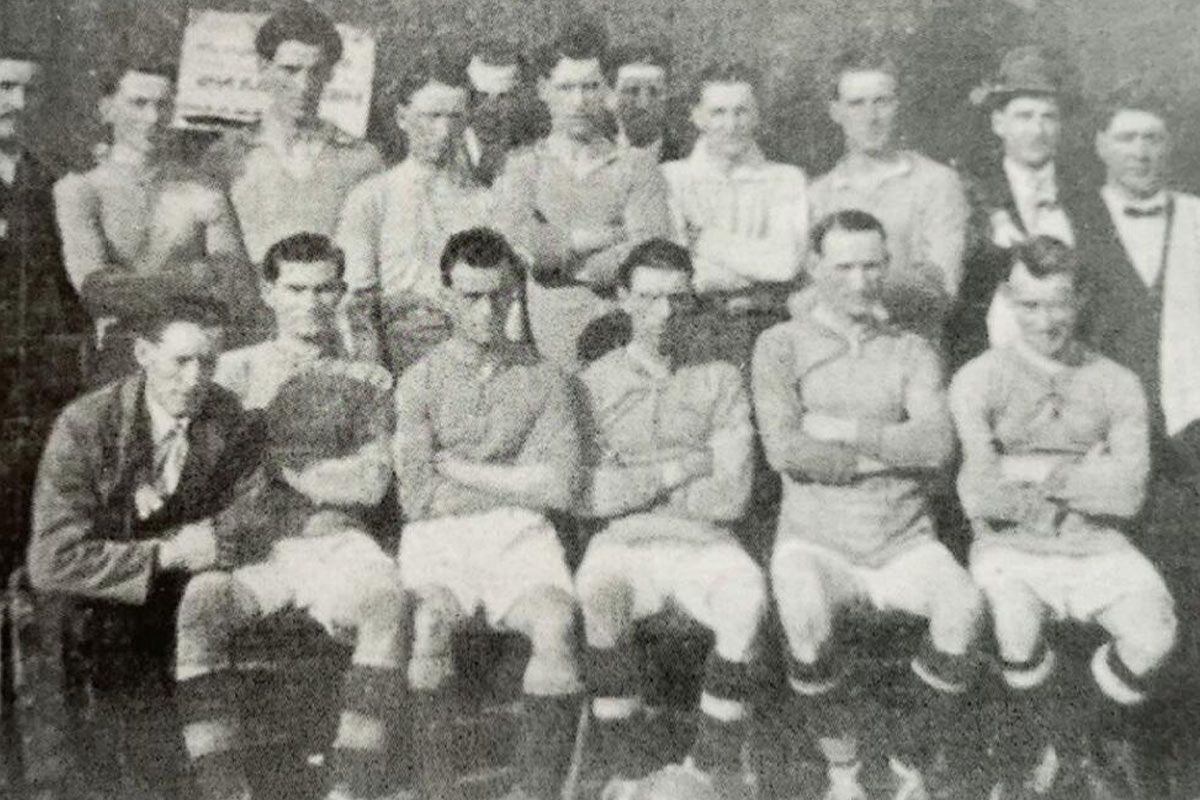
One Hundred Years On: ATAFC FAI Cup Success
One hundred years ago today, Athlone Town AFC won it’s first major honour.
March 17th, 1924. Back then, the competition was named the Free State Cup, which served as the precursor to the FAI Cup. Athlone’s opponents in the final at Dalymount Park were the Cork-based team Fordsons, affiliated with the Fordson tractor plant located in Cork.
It was a somewhat unusual matchup considering it was only the third cup final, but both teams had earned their place in the showcase event of club football in the country. Athlone had defeated Midland Athletic, Shelbourne FC then Bohemian FC on their path to the final.
At that time, the League of Ireland was just three years old, having emerged as a breakaway from the Belfast-based Irish Football Association (IFA). Previously, the IFA had overseen the sport throughout the 32 counties.
Athlone initially entered the Free State Cup as a junior, non-league team during the 1921/22 season, later transitioning to become members of the Free State League in the subsequent season.
The football history of Cork is rich with numerous clubs, but at that time, Fordsons stood out as the dominant force in Munster football. They had reached the semi-finals of the cup in 1922/23 and claimed victory in the 1926 final. However, like many Cork-based teams, they underwent a transformation into Cork FC in 1930 after Ford withdrew their support for a League of Ireland team.
Athlone’s journey in the cup commenced with a first round 2-0 victory at home to another now-defunct league team, Midland Athletic. This team sourced its players from the ranks of the Midland and Great Western Railway, which were based in Dublin.
Athlone’s victory earned them a spot in the quarter-finals, where they faced Shelbourne, who had narrowly missed out on the league title to Bohemians. In a match witnessed by over 5,000 spectators at Shelbourne Park in Ringsend, Athlone pulled off a surprising 2-0 win. Goals from Jim Kennedy and the agile Frank Ghent secured the victory, supported by a standout performance from goalkeeper Paddy O’Reilly.
Next up was the semi-final against league champions Bohemians, once again at Shelbourne Park. The match was a hard-fought, intense battle that ended in a scoreless draw, leading to a replay at the same venue on March 1st, 1924.
This time, a crowd of over 9,000 spectators watched as Athlone once again emerged victorious at Shelbourne Park, stunning the Bohemians side. An early defensive error led to Frank Ghent capitalizing on a loose ball, putting Athlone in the lead after just 12 minutes. Throughout the match, Athlone endured relentless pressure from Bohemians, with only resilient defending and remarkable saves from O’Reilly keeping the Dubliners from equalizing. However, as the game progressed, Athlone began to regain momentum and threatened the Bohemians’ goal once more in the final quarter. With just seven minutes remaining, Athlone’s Norman Lyster secured the crucial second goal, sending the sizable Athlone crowd into a frenzy of celebration.
The Evening Mail rather stiffly remarked: “The big Athlone following almost got out of hand when the second goal was scored but the stewards dealt with the incident.”
The Town were now set for a date with destiny in the cup final on March 17th at Dalymount Park. Their opponents were Fordsons, who had received a bye in the opening round and had subsequently defeated league teams Jacobs and St James’s Gate.
The final drew an estimated crowd of about 20,000, with spectators overflowing onto the pitchside around both goals and along the sidelines.
Athlone’s lineup was as follows: Paddy O’Reilly(GK), Joe Monahan, James Hope, Terry Judge, John Joe Dykes, Tommy Muldoon, Norman Lyster, Denis Hannon, Jim Sweeney (C), Tommy Collins and Frank Ghent.
Monahan, Muldoon, Lyster, Hannon, Sweeney, and Ghent hailed from Athlone. Collins originated from Moate, while Hope and Judge represented Mullingar. Dykes, originally from Sligo, and O’Reilly, a Dubliner, were the sole players from outside Westmeath on the team.
Athlone utilized their favored playing style, characterized by resolute defending, high and long clearances, along with intense, fast-paced pressure and swift counterattacks.
The tactics had proven successful in unsettling the composed Shelbourne and Bohemians outfits previously, and it similarly dumbfounded the Cork side. According to one newspaper, the Cork team was “bewildered” by Athlone’s tactics.
Despite Athlone’s dominance throughout the match, the golden goal arrived on the 20-minute mark. Hannon capitalized on a loose ball, following Jim Sweeney’s blocked effort, and swiftly found the net.
Captain Sweeney was presented with the trophy after the match, marking the first ever major trophy success for the club.
Ninety-nine years later, our senior women’s team would go on the same journey to glory and write their own names into the history books.
